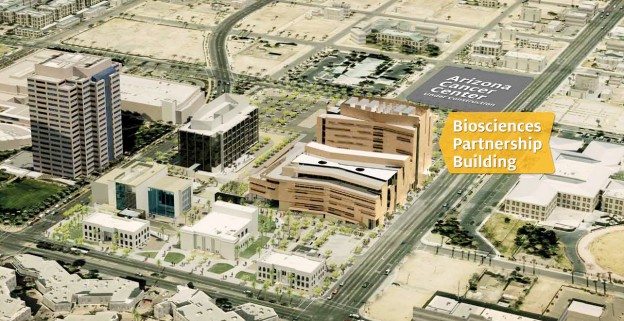The Critical Path Institute (C-Path), an independent, non-profit organization that works to advance medical product innovation and regulatory science, announced the appointment of Timothy Franson, M.D., to its board of directors.Continue reading
Author Archive: AZBio
MeMD’s Virtual doc visits ensure victims’ privacy is protected
SHARE THE HEALTH: Free WebCam Health Checks For Local Domestic Violence Victims
Add YOUR Voice to the FDA PDUFA VI Negotiations
In August, the Biotechnology Industry Organization (BIO) announces a first-of-its-kind survey tool on FDA/Sponsor Interactions During Drug Development to better inform policy initiatives designed to improve FDA and drug sponsor coordination and communication during drug development. This will serve to inform the next reauthorization of the Prescription Drug User Fee Act (PDUFA VI), which will begin in late 2015 with final enactment expected in 2017.
“Sponsor input is critically important for BIO and the entire industry to understand the real challenges associated with the regulatory process to help guide our discussions with FDA and ultimately work with Congress to establish new and effective measures to implement under PDUFA VI,” said John Maraganore, PhD, CEO of Alnylam Pharmaceuticals and Chair of BIO’s Emerging Companies Section Governing Board.
Survey responses will help assess FDA-sponsor interactions during drug development and address problems, particularly those that result from inconsistencies between review divisions.
The survey will focus on individual clinical programs for products that are in the pre-clinical testing phase through the clinical testing phase, prior to submission of an initial NDA/BLA, and responses will be held strictly confidential, blinded, and aggregated.
Sponsor input will help identify areas where policies, regulations, and practices are working well and should not be changed; and identify areas where policies, regulations, and practices need improvement in order to make the process more efficient and effective.
Participants will have access to the survey tool 24 hours a day, seven days a week so that responses can be updated on a continual basis. The survey is open to all biopharmaceutical representatives regardless of membership within BIO. Participants will be provided with an annual report on the survey results and invited to join exclusive BIO webinars to discuss survey results with industry leaders and regulatory experts.
The survey can be accessed at https://fdasurvey.bio.org.
Dr. Maraganore discussed the upcoming PDUFA VI reauthorization in a recent BIO Buzz Center video interview that can be accessed here.
Positioned for Growth: Regenesis Announces Leadership Changes
Regenesis Biomedical Inc., today announced a series of senior leadership changes, reflecting further commitment to deliver on the company’s growth and clinical development plans. Continue reading
Arizona Telemedicine Program Founding Director Dr. Ronald S. Weinstein Honored
Arizona Telemedicine Program Founding Director Dr. Ronald S. Weinstein Honored by the ‘Custodian’ of the Nation’s First Telemedicine Program, the Center for Connected HealthContinue reading
Cooper Tire Begins Testing Tires Made with Guayule Component
Cooper and Consortium Partners Update Progress on $6.9 Million Grant to Develop Guayule Polymer for Tire Applications
UofA breaks ground on 245K SF Biosciences Partnership Building

With a shovel of dirt, construction began Thursday on the 10-story Biosciences Partnership Building; the latest development in downtown Phoenix.
University of Arizona President Ann Weaver Hart and Phoenix Mayor Greg Stanton tilled the soil ceremoniously marking the beginning of the 2-year design and construction for the 245,000-square foot research building on the Phoenix Biomedical Campus.
“This building will foster collaborations with scientists that will lead to more cures, better treatments and bring more federal and private dollars to the state,” said President Hart. “We will pursue expanded partnerships with industry that we hope will lead to groundbreaking discoveries in the areas of neuroscience, cardiovascular and thoracic science. This building will allow us to further these efforts and, ultimately, improve lives.”
As announced earlier this year by the university and the City of Phoenix, plans are in place to construct the 10-story, 245,000-square-foot research building just north of the Health Sciences Education Building on the downtown campus.
“This building will serve the medical school and beyond with important research and faculty to teach the next generation of health professionals,” Stanton said. “Of course, this just adds to the economic vibrancy of downtown. The research facility initially will bring construction jobs, and then high-paying, research-related jobs, including specialized technicians and other support staff for faculty and scientists.”
The 2-year construction on the $136 million building is expected to translate into nearly 500 jobs initially and another 360 permanent jobs at build out.
“The Bioscience Partnership Building represents yet another milestone as the city and the university develop a major academic medical center in downtown Phoenix,” said Stuart D. Flynn, MD, dean of the University of Arizona College of Medicine – Phoenix. “Research in this building, in collaboration with our partners, will advance healthcare for all and expand our role as an economic driver for the city, valley, and state.”
The building is the latest development in the steady expansion of the downtown Phoenix Biomedical Campus and expanding academic medical center. In 2012, the award-winning Health Sciences Education Building opened, housing health education for both the UA and Northern Arizona University. Construction continues on The University of Arizona Cancer Center at Dignity Health St. Joseph’s. The cancer center, a 220,000-square foot outpatient and research facility, is scheduled to be completed in 2015.
The Phoenix Biomedical Campus plays host to four UA health science colleges – the Mel and Enid Zuckerman College of Public Health as well as the colleges of nursing and pharmacy. Also on campus are three NAU programs – physician’s assistant, physical therapy and occupational therapy as part of the university’s College of Health and Human Services. Arizona State University’s School of Nutrition and Health Innovation is housed in the Arizona Biomedical Collaborative 1 building just southwest of the education building and immediately south of the Translational Genomic Research Institute (TGen).
The funding for the Biosciences Partnership Building comes from the Stimulus Plan for Economic and Educational Development bonds approved by the legislature in 2008that paid for construction of the Health Sciences Education Building and related campus improvements. Research focus areas include neurosciences, healthcare outcomes, cancer and precision medicine.
Arizona Company Launches Lung Cancer Test for $99
Patients have immediate access to a blood test for the early detection of Lung Cancer from Global Cancer Diagnostics, Inc. Continue reading
AZBio Announces Events to Support America’s Vets this November
This November AZBio is partnering with great organizations that support our Veterans and also providing information on how Veterans can be trained to become valuable team members in our life science businesses.Continue reading
After Arizona Physicians said Vote “No” on Prop 303, the Debate Continued on Arizona Horizon
As Arizonans vote with early ballots or prepare to go to the polls in November, 50 Arizona physicians explained why it is important to vote “no” on Proposition 303 and Joan Koerber-Walker explains her personal concerns with this piece of public policy in a debate on Arizona Horizon. Continue reading

